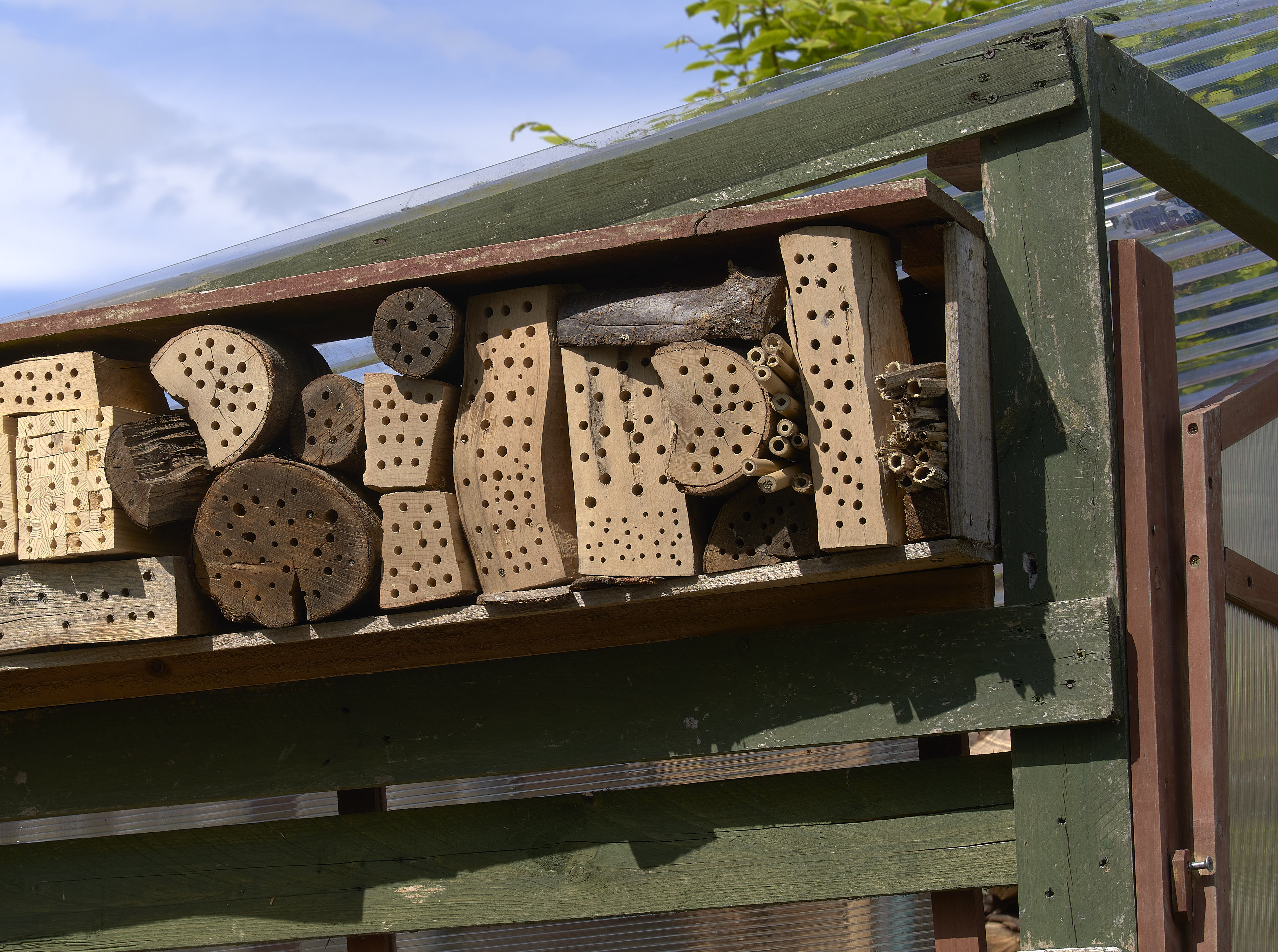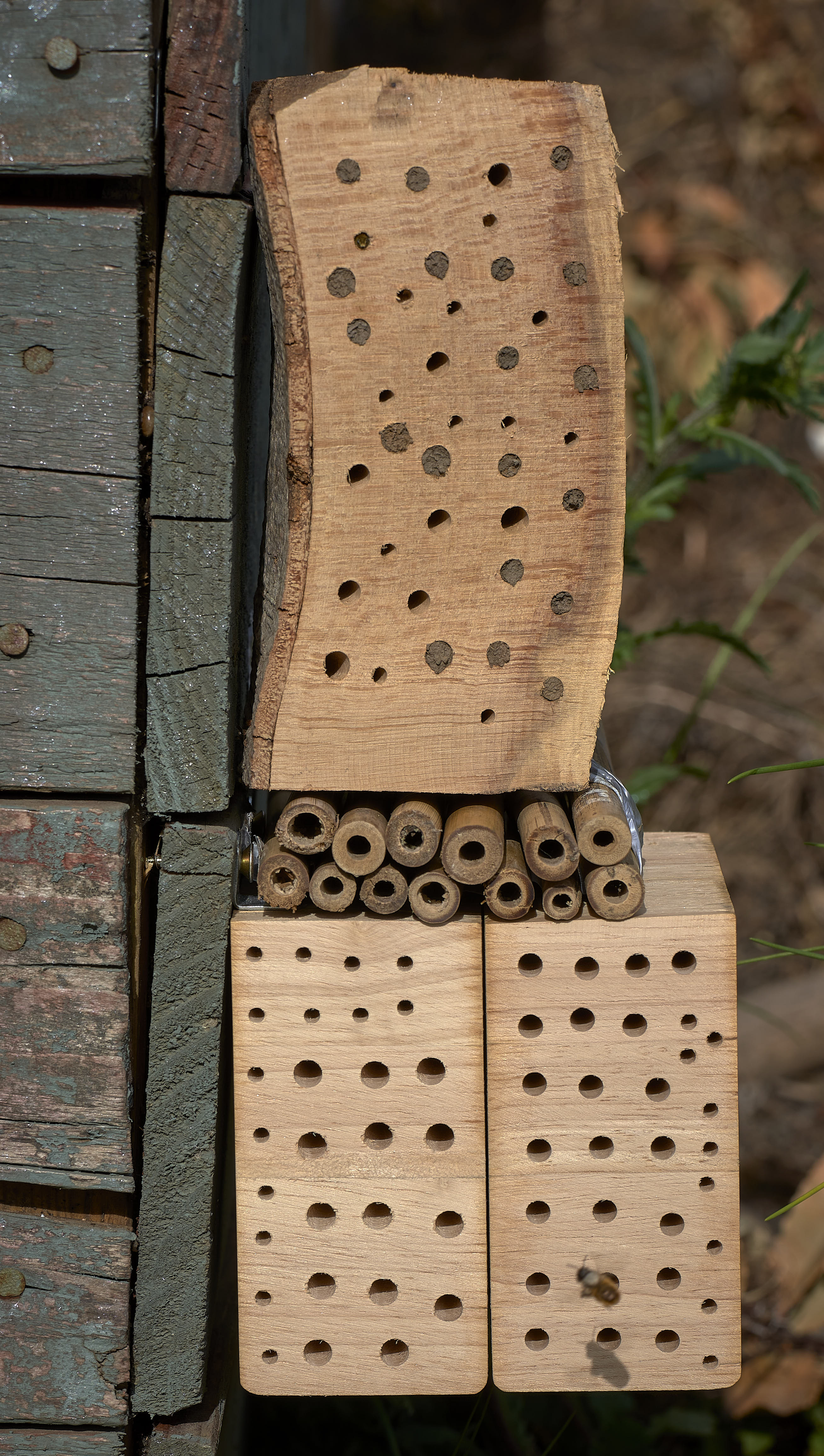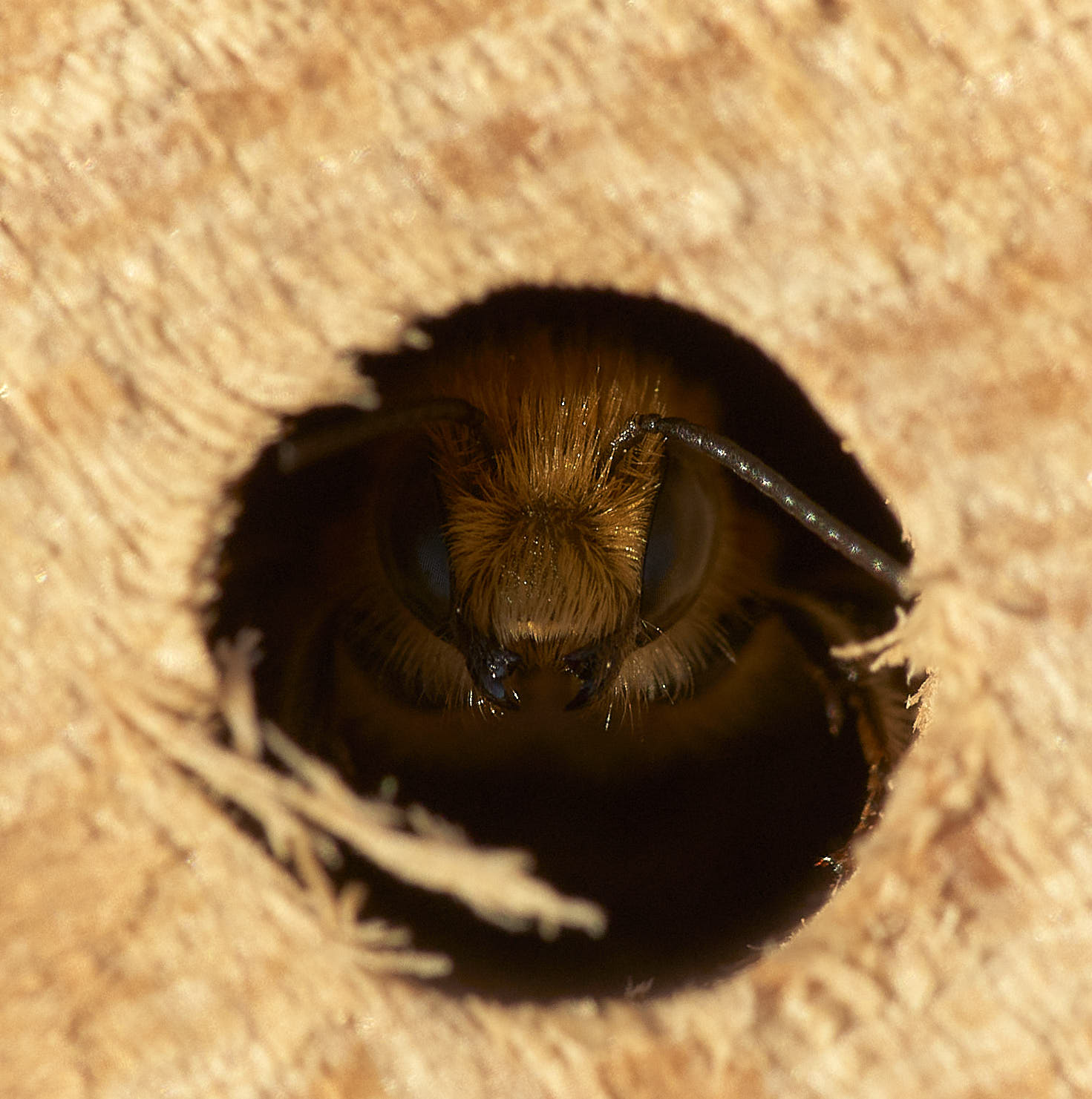11 May 2020
Blog: It’s easy to build your own bee hotel
Guest Blog, Colin Edwards, Environment Policy Adviser.
As we continue to follow Scottish Government advice on staying at home, connecting with nature can be an important part of everyday life.
Nature walks have been shown to reduce stress and improve physical and mental wellbeing. They also helps foster a deeper appreciation of nature and develop an understanding that we all have a responsibility to protect nature and the environment.
Sir David Attenborough is quoted as saying “Cherish the natural world, because you’re a part of it and you depend on it.”
We don’t have to travel far to find nature and wildlife in Scotland, its all around us if we take the time to look. We can also encourage that same wildlife a bit deeper into our lives.
I try to find ways to attract wildlife into my garden, and here I share my experiences with bee hotels.

These hotels are designed to replicate the chambers or natural holes which solitary bees use during the season. The hotel can be constructed from a variety of natural materials and range from a simple set of bamboo canes to a wood log with a series of drilled chambers to represent holes found naturally in deadwood - or a collection of reeds and naturally hollow plant stems.

Design ideas, construction tips, suggestions on where to place them and after season hotel maintenance is available from a range or sources including The Scottish Wildlife Trust, Woodland Trust and the Bees Wasps & Ant Recording Society.
My hotels are kept simple, and located in several points around the garden: one is located low to the ground so that I can watch the activity unfold. It’s enough to keep me entertained for many hours at a time.
At this time in the season I have both Red Mason bees (Osmia bicornis) and Blue Mason bees (Osmia caerulescens) using the chambers. My recent hotel was a series of holes drilled into log – it has proven so popular I have had to construct another (made from an old wooden chopping board) and some bamboo canes. Within 5 mins of attaching it to the same spot as the log, it was being investigated and used by several bees.

Watching from a suitable distance you can see the activity unfold in sequence starting with the female filling the chamber with pollen collected in special hairs on the undersides of their abdomen, in a structure known as a pollen brush, to finally sealing the entrance to the chamber with mud, to allow the young larvae to develop in safety.

I’d thoroughly recommend building your own bee hotel – it’s a great way to these amazing creatures.